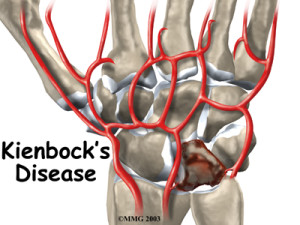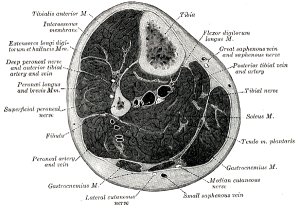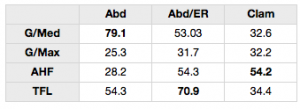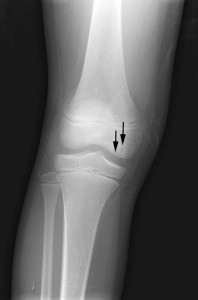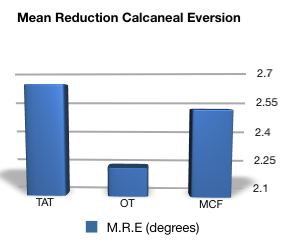Aerobic exercise, particularly in the form of running, has become more popular with the general population over the last few decades. Unfortunately, this increase in healthy exercise may come at a cost with up to 80% of runners reporting a lower limb injury. These trends mean that preventing running injuries is gaining significant importance in the world of sports medicine. One touted intervention that is currently in vogue is adapting the runner’s biomechanics to a forefoot strike pattern or barefoot running technique…
Lateral epicondylalgia (tennis elbow) is a condition that I, and am sure many other physiotherapists out there, treat very commonly. Interestingly, despite the frequency with which healthcare is sought for this condition; only recently has our understanding of the pathophysiology of lateral elbow overuse injury improved. Consequently, the treatment approaches for lateral epicondylalgia vary widely and lack definitive evidence. Therefore, this article will discuss the evidence based assessment and management of lateral epicondylalgia (tennis elbow)…
If you work with athletes who train hard, as many sports physiotherapists do, then you will have encountered exercise induced muscle damage or delayed onset muscle soreness (DOMS). It is also likely that the suffering athlete has come to you and said “I’m so sore from that workout – can you do anything?”. There are many widely used post workout and recovery strategies that are touted as effective at enhancing an athletes recovery from high intensity exercise. However, as is frequently the norm in sports medicine, the evidence for their use is mostly anecdotal rather than based on high quality clinical trials. Fortunately, a new review recently published discusses the effectiveness of physiotherapeutic interventions following high intensity exercise.
Kienbock’s Disease is a rare and infrequently discussed source of wrist pain that you could definitely encounter in your clinical practice. The condition is named after the Viennese radiologist Robert Kienbock who presented his findings on the disorder in his 1910 publication ‘Concerning traumatic malacia of the lunate and its consequences’. This condition, discussed in depth below, primarily affects people between 15 and 40 years old and has been documented in athletes from many sports that include repetitive use of the wrist e.g. golf, tennis, martial arts, etc . Therefore, if you work with athletes from these sports, you should remain on high alert for the occurrence of Kienbock’s disease.
As sports physiotherapists we treat all sorts of patients that want to do crazy things. You know… run, swim and ride all day and even climb mountains and cliffs. Many of these athletes are young and physically active, and they strive to push their body to its physical limits. A well recognised condition to affect this group of people is chronic exertional compartment syndrome (CECS). In fact, eighty-seven percent of patients with CECS participate in sports, and runners account for 69% of these cases Thus, sports physiotherapists, particularly those that deal with endurance sports, will assess and treat this condition with considerable frequency. This article discusses new research on changing biomechanics to manage CECS.
It has been suggested that up to 79% of runners will sustain lower limb injuries. The patients with these pathologies frequently present with identifiable biomechanical faults associated with either deficits in pelvic strength or neuromuscular function. Thus, physiotherapists and physical therapists the world over implement rehabilitation programs aimed at strengthening the lateral hip abductors and external rotators. However, when it comes to exercise prescription for this musculature we require EMG studies to ensure that we are operating from a strong evidence basis. This article discusses such research.
In the sports physiotherapy world we are frequently called upon to assess and treat athletes of all ages. As you might expect, this may range from young children through to nonagenarian Master’s athletes. Sports physiotherapists would know when dealing with young athletes missing a career-ending (yes, career) diagnosis can be unforgivable. One such diagnosis is juvenile osteochondritis dissecans of the knee, a condition that commonly affects athletic children, and one that if left unchecked could jeopardise the integrity of their knee. Thus, accurate and timely diagnosis followed by appropriate management is essential when dealing with juvenile osteochondritis dissecans…..
On a daily basis sports physiotherapists assess and diagnose in an attempt to establish contributors to injury. When assessing lower limb injuries one of the most common offenders seems to be excessive dynamic pronation. As you know this movement is required during stance phase to allow for normal patterning. Pronation is not always evil! However, where we get into trouble is when there is excessive pronation. This article will discuss the effectiveness of various external controls in preventing excessive pronation…
The majority of the sports physiotherapists reading this will know the incredible frequency with which we treat athletes with patellofemoral pain syndrome. There is a good reason for this, it is the most commonly reported injury sustained by runners (Taunton et al., 2002). Whilst the mainstays of treatment have previously focussed solely on the patellofemoral joint, we are seeing more research identifying the importance of the assessing the other components of the kinetic chain.This article will discuss new research on the impact of real time gait retraining for patellofemoral pain syndrome…
If you are a sports physiotherapist that works with triathletes then you are all too aware of the potential for the development of overuse injuries. The triathlon is a grueling sport with distances ranging from Sprint distance (750 m swim, 20 km bike, 5 km run) through to the Ultra Distance or Ironman Triathlon distances (750 m swim, 20 km bike, 5 km run). No wonder many triathletes suffer overuse pathologies huh? This article discusses new research into the potential role of plyometric training in the injury prevention and rehabilitation of triathletes…
In the past this site has featured some lighter, colloquial blog posts. These articles discuss issues related to the greater physiotherapy community. Thus, I present a few mantras I have heard, adapted or made up for the physios to live by in the coming year.
Radial tunnel syndrome is rare, it is challenging to differentially diagnose and can be a monster to manage. If you have a recalcitrant case of tennis elbow then this post will interest you! This article discusses the best available evidence for assessment and management of radial tunnel syndrome.




